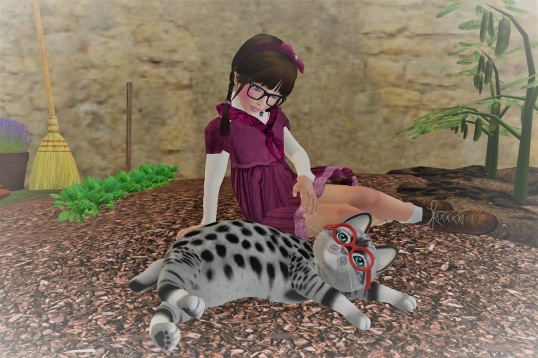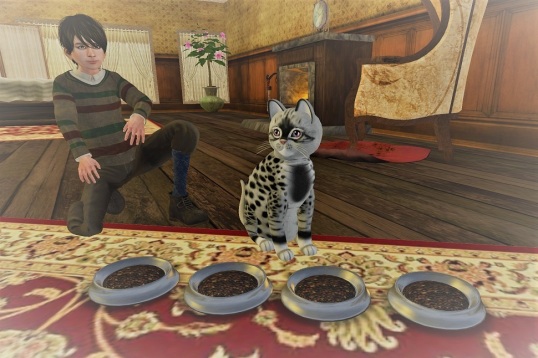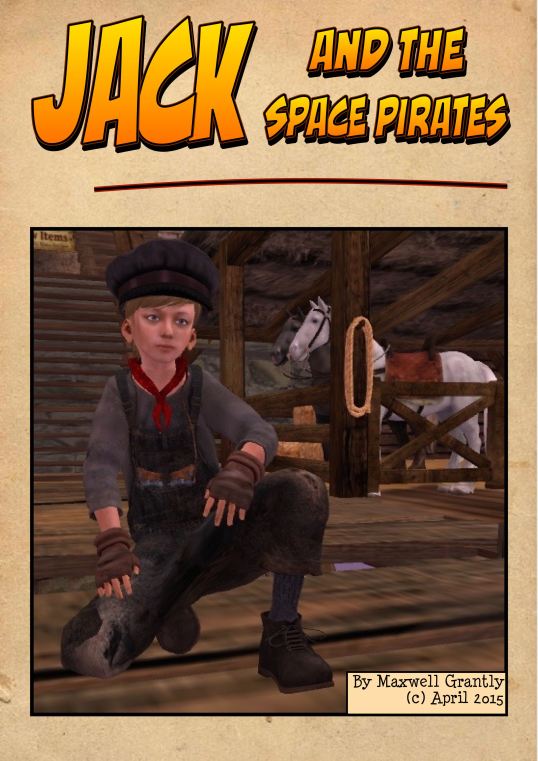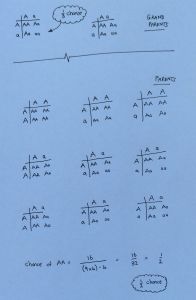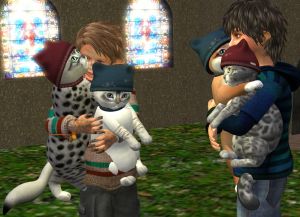
Snowed Under with KittyCats
Back Breeding KittyCats
Many owners with be familiar with the principle of outcrossing or inbreeding to obtain a desired KittyCat look. If you have browsed the various cat markets looking for a trait to add to your existing stock you have been outcrossing. This is when you introduce an unrelated cat to existing stock to get the desired result that you want.
For example, to produce a Russian Black with passion eyes, my younger brother offered the use of Sniffles (a Bengal Snow with passion eyes) to mate with a cat of mine, Jet (a Russian Black with blue ice eyes) in order to achieve this breeding target. This is an example of outcrossing.
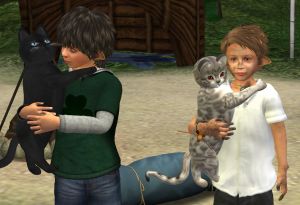
Jet and Sniffles
However, if I had a sibling, parent or other close family member with the genes that I required, this would have been an example of inbreeding.
Luckily for my brother and I, the majority of our offspring were passion-eyed Russian Blacks and so the pairing had produced exactly what we had wanted, many times over.
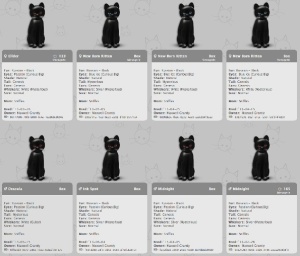
Majority of Passion Eyed Russian Blacks
However, there are times when the pairing of parents fails to give the result that is required.
For example, look at the following combination of kittens that could be used in an attempt to get a Russian Black kitten, with purple rain eyes and vampire ears.
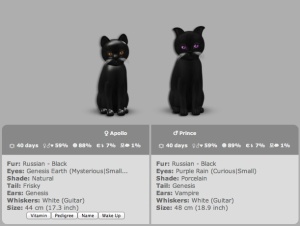
Trying to Get a Purple Rain Vampire
On first inspection you may think that, because all the desired traits are shown in abundance in both the parents, it would be an easy affair to simply leave the pair bonded together and then wait for them to produce the kitten that you wanted. However, the female (Apollo) has both highly dominant eyes and ears and, very importantly, she has a hidden ear shape of “curious” that is also more dominant than the vampire ear gene of her mate, Prince. This means that, when she breeds, there is a 50% chance of her passing her genesis ear and a 50% chance of passing her curious ear. The result being that, half of the offspring of this combination will have genesis ears and the other half will have curious ears. The goal of achieving a Russian Black with both purple rain eyes and vampire ears with this combination is impossible.
Back Breeding
This is where the strategy of back breeding comes into play.
When two cats produce a box, you are moving forward with the generations. Back breeding is the name given to the method in breeding the offspring with one of the parents or grandparents (or even further back, if you so desire.) For the following example, I have used back breeding with parent/offspring pairings.
(In real life, back breeding is used by livestock breeders and horticulturalists to produce a desired line. However, when over-utilized, it does lead to a decreased fitness in a population. This could be why it is inherently repulsive for use in human populations across the globe, regardless of culture or background. However, with KittyCats, there is no risk of its excessive use and it should just be seen as a legitimate method of shuffling the desired genes in a controlled way to obtain the result that is desired.)
Allow me to illustrate how back breeding works by considering one past project of my brother and myself: the creation of a passion-eyed, vampire-eared Russian Black.
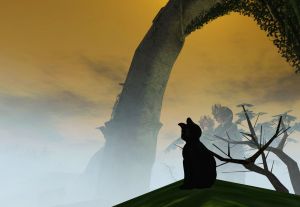
Our Goal: The Vampire Cat
After obtaining the Russian Black kitten with passion eyes, as described above. The new project of Skippy and I was to add vampire ears to the mix and create a perfect kitten for Hallowe’en. This project was to be harder than it may have first seem, simply because vampire ears are so recessive.
One of the kittens produced by the original Sniffles and Jet was called Ellder.
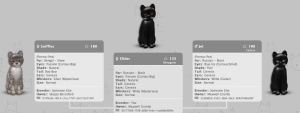
Ellder
Ellder had the desired passion eyes and a Russian Black fur and so the next project was to add vampire ears to the mix. One suitable male called Fang was found to bond with her.
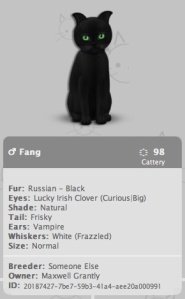
Fang
Fang had the same sombre Russian Black Fur with vampire ears but Lucky Irish clover eyes instead. On first inspection, he might seem the perfect father to produce a vampire-eared offspring. However, the problem was that both Ellder’s genes for ears (genesis, the shown, and curious, the hidden) were more dominant than both Fang’s vampire ear gene and his unknown hidden ear gene. This particular combination would never produce a vampire-eared offspring. But however, more importantly, it could be used to set up a paring that could.
On breeding, one of the two genes from Ellder would combine with one of the two genes from Fang to produce a kitten offspring. The four different combinations could be any one of the following:
Genesis (from Ellder) with Vampire (from Fang)
Curious (from Ellder) with Vampire (from Fang)
Genesis (from Ellder) with Highly Recessive Unknown (from Fang)
Curious (from Elder) with Highly Recessive Unknown (from Fang)
In every one of these four combinations, the genes for ear shape of Ellder were more dominant than the genes for ear shape of Fang and so half the offspring would have genesis ears and the other half of the offspring would have curious ears.
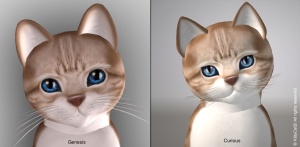
Genesis and Curious Ears
However, this particular pairing had not been in vain. Despite the shown ear shape being either genesis or curious, all of these offspring now had a recessive gene introduced that had come from Fang, the father. This recessive gene may have been either vampire ears or (possibly) an unknown gene that was even more recessive.
This is where the strategy of back breeding came into play. When a daughter was produced, she was then swapped with the mother; Fang was continued to be used as the father. (The reason a son was not used and swapped with Fang was solely because it was the genes of Fang that were recessive and so are the genes we were trying to introduce into the offspring. If we had of swapped a son with Fang, we would have lost the vampire ear shape from the mix.)
Now, it was irrelevant whether this daughter had either genesis ears or curious ears as shown, either had an equal chance of producing the desired outcomes. However, in this particular bonding, the daughter actually had genesis ears. She was named “Chancer” and looked very similar to her mother, with the exception that she carried the vampire ear gene as her recessive trait.
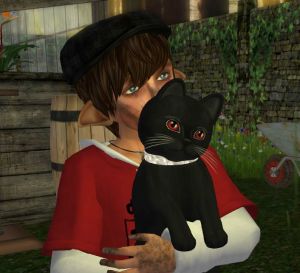
Chancer
Ellder was retired from her partnership with Fang and Chancer was substituted in her place. A daughter to mother back breeding substitution was used.
Now, the four different ear combinations between Chancer and Fang were one of two different possibilities, as now shown below:
(Example 1) Either:
Genesis (from Chancer) with Vampire (from Fang)
Curious (from Chancer) with Vampire (from Fang)
Vampire (from Chancer) with Highly Recessive Unknown (from Fang)
Vampire (from Chancer) with Highly Recessive Unknown (from Fang)
(Example 2) Or:
Genesis (from Chancer) with Vampire (from Fang)
Curious (from Chancer) with Vampire (from Fang)
Highly Recessive Unknown (from Chancer) with Highly Recessive Unknown (from Fang)
Highly Recessive Unknown (from Chancer) with Highly Recessive Unknown (from Fang)
In example one, the chance of gaining a vampire-eared kitten was now 50% and in example two the chance of gaining a vampire-eared kitten was 25%.
Actually, in the Chancer and Fang pairing, Skippy and I were lucky and we managed to obtain “Example 1” so that our final kitten “The Vampire Kitten” was born very soon. However, if we had obtained “Example 2” the chances were that it would have been born a week or two later.
Most importantly, we had achieved our goal of breeding the cat that we wanted and we were the proud owners of our perfect Vampire kitten called “The Vampire Prince” well before our target date of Hallowe’en.
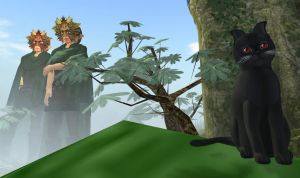
The Vampire Prince
Conclusion
I am aware that there is a lot of reading in this blog to digest and that the whole process may seem very daunting to any KittyCats newcomer. However, there is a simple rule that can be used when employing back breeding, that avoids the need to memorize probability charts or learn the theory behind genetic Punnett squares. If you find one trait rather stubborn to introduce into your kittens, it possibly could be that the trait is highly recessive and so back breeding may be required. In this case, simply swap your existing parent with any identical offspring of the same sex. In this way, you will have introduced the recessive gene into the mix and increased your chance of producing your goal from zero to either 25% or 50%
Good luck with your breeding projects. Skippy and I hope that you have found these notes useful and we wish you well in your KittyCats projects.
